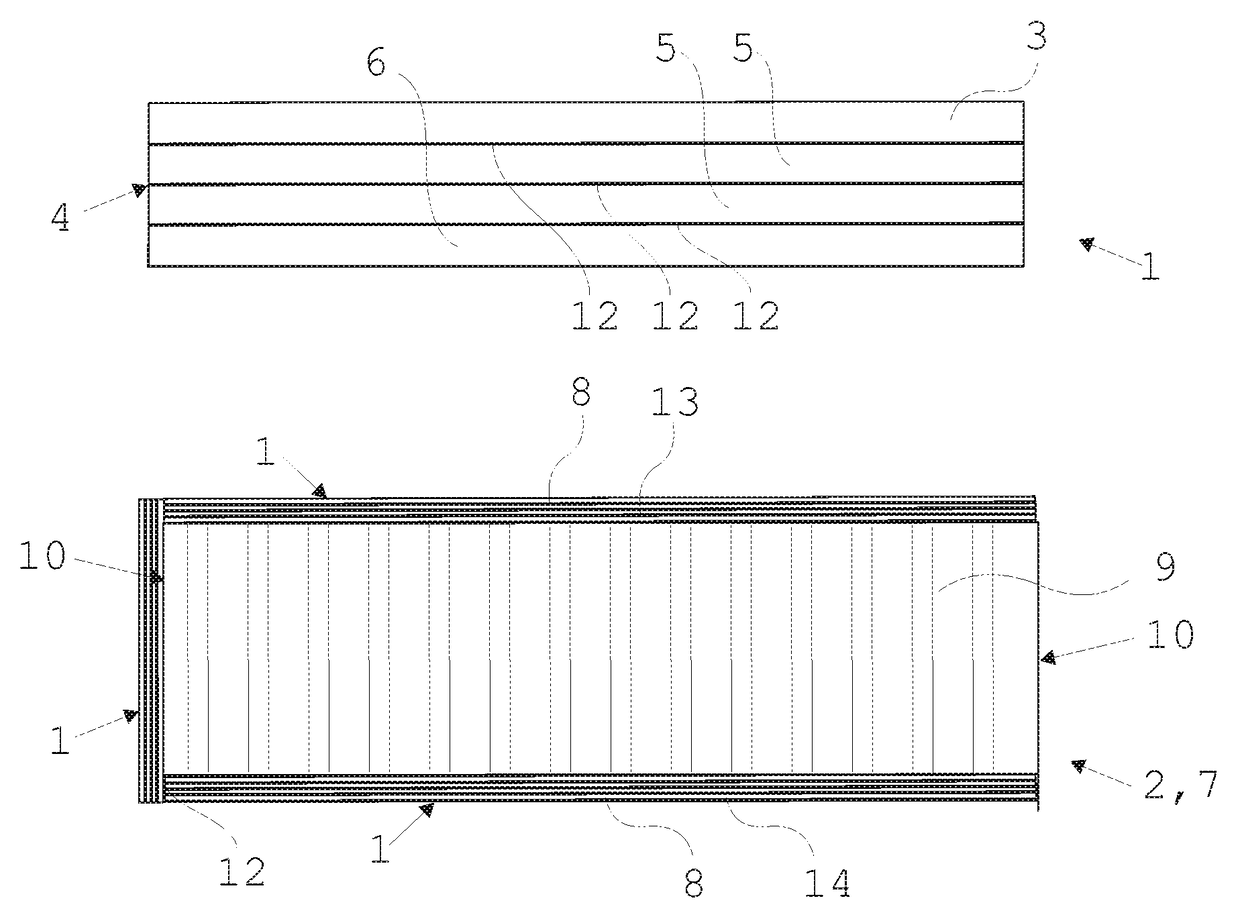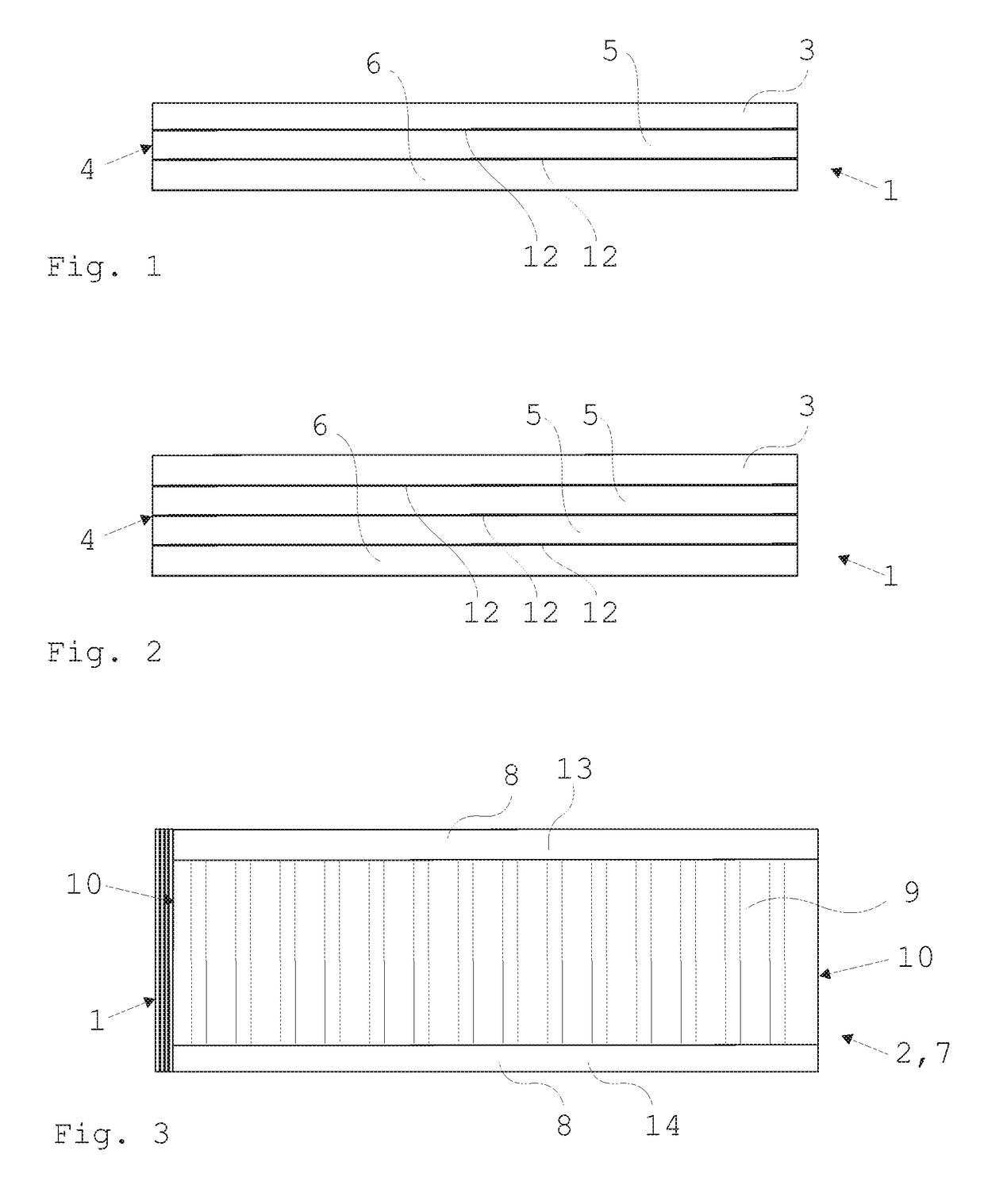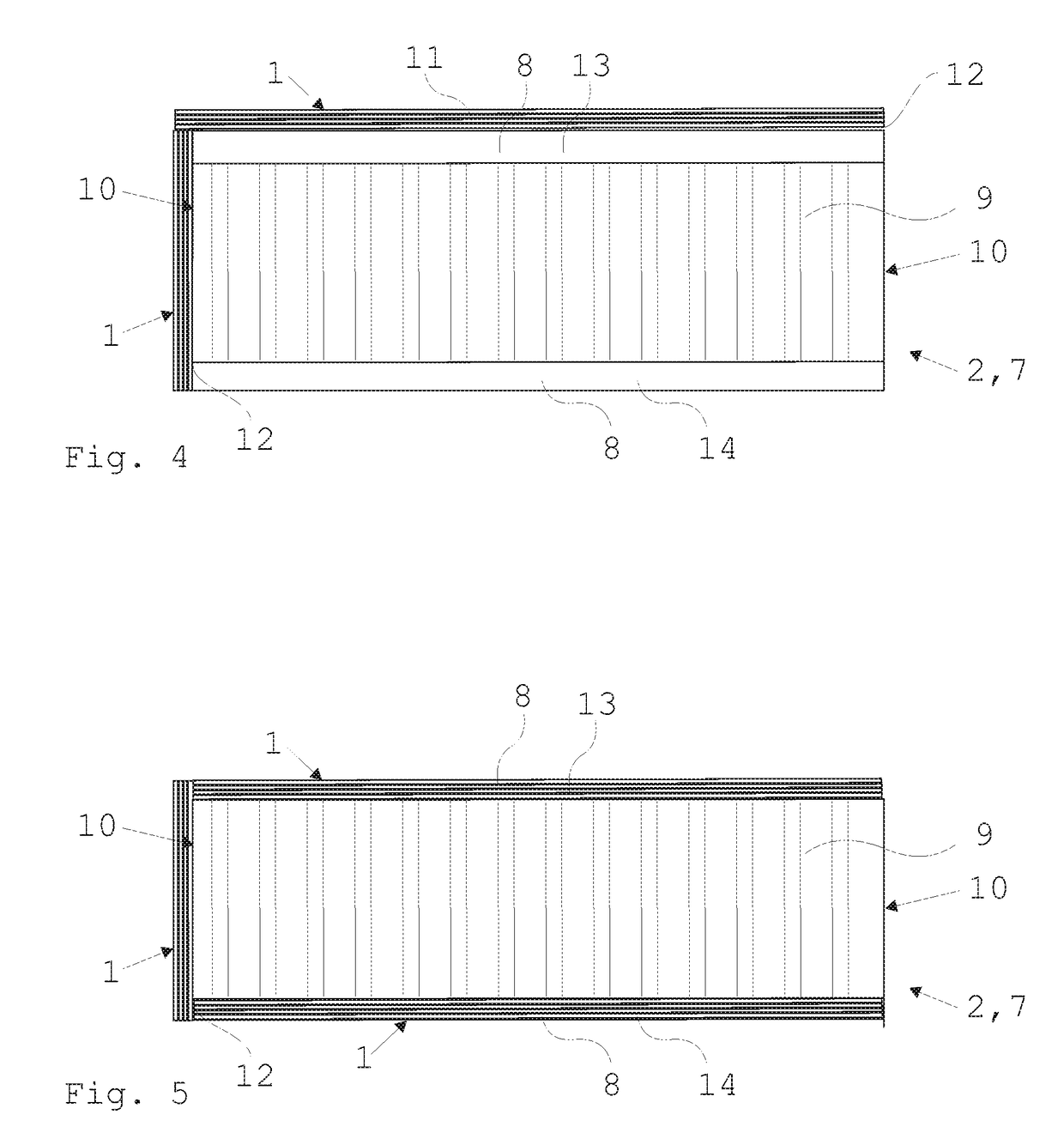Fire-retardant edge material for panels, corresponding sandwich panel, and fire-retardant cover layer
a technology of fire-retardant edge material and sandwich panel, which is applied in the direction of synthetic resin layered products, furniture parts, other domestic articles, etc., can solve the problems of conventional edge strip, insufficient fire protection, and inability to provide sufficient fire protection, so as to achieve high fire protection and/or resistance to fire. , the effect of high fire resistan
- Summary
- Abstract
- Description
- Claims
- Application Information
AI Technical Summary
Benefits of technology
Problems solved by technology
Method used
Image
Examples
embodiments
Embodiment 1
[0036]Edge material (1) for panels (2), the edge material (1) being constructed from a plurality of bonded layers, characterised in that[0037]the edge material (1) comprises a first layer (3), which is non-metallic,[0038]the edge material (1) comprises a core layer (4), which is made of at least one metal layer (5), and[0039]the edge material (1) comprises a second layer (6), which is non-metallic, the core layer (4) being arranged between the first layer (3) and the second layer (6).
embodiment 2
[0040]Edge material (1) according to Embodiment 1, characterised in that the core layer (4) is made of two bonded metal layers (5).
embodiment 3
[0041]Edge material (1) according to either Embodiment 1 or Embodiment 2, characterised in that the edge material (1) has a material thickness of between 0.3 mm and 3.0 mm.
PUM
| Property | Measurement | Unit |
|---|---|---|
| Fraction | aaaaa | aaaaa |
| Length | aaaaa | aaaaa |
| Length | aaaaa | aaaaa |
Abstract
Description
Claims
Application Information
 Login to View More
Login to View More - R&D
- Intellectual Property
- Life Sciences
- Materials
- Tech Scout
- Unparalleled Data Quality
- Higher Quality Content
- 60% Fewer Hallucinations
Browse by: Latest US Patents, China's latest patents, Technical Efficacy Thesaurus, Application Domain, Technology Topic, Popular Technical Reports.
© 2025 PatSnap. All rights reserved.Legal|Privacy policy|Modern Slavery Act Transparency Statement|Sitemap|About US| Contact US: help@patsnap.com



